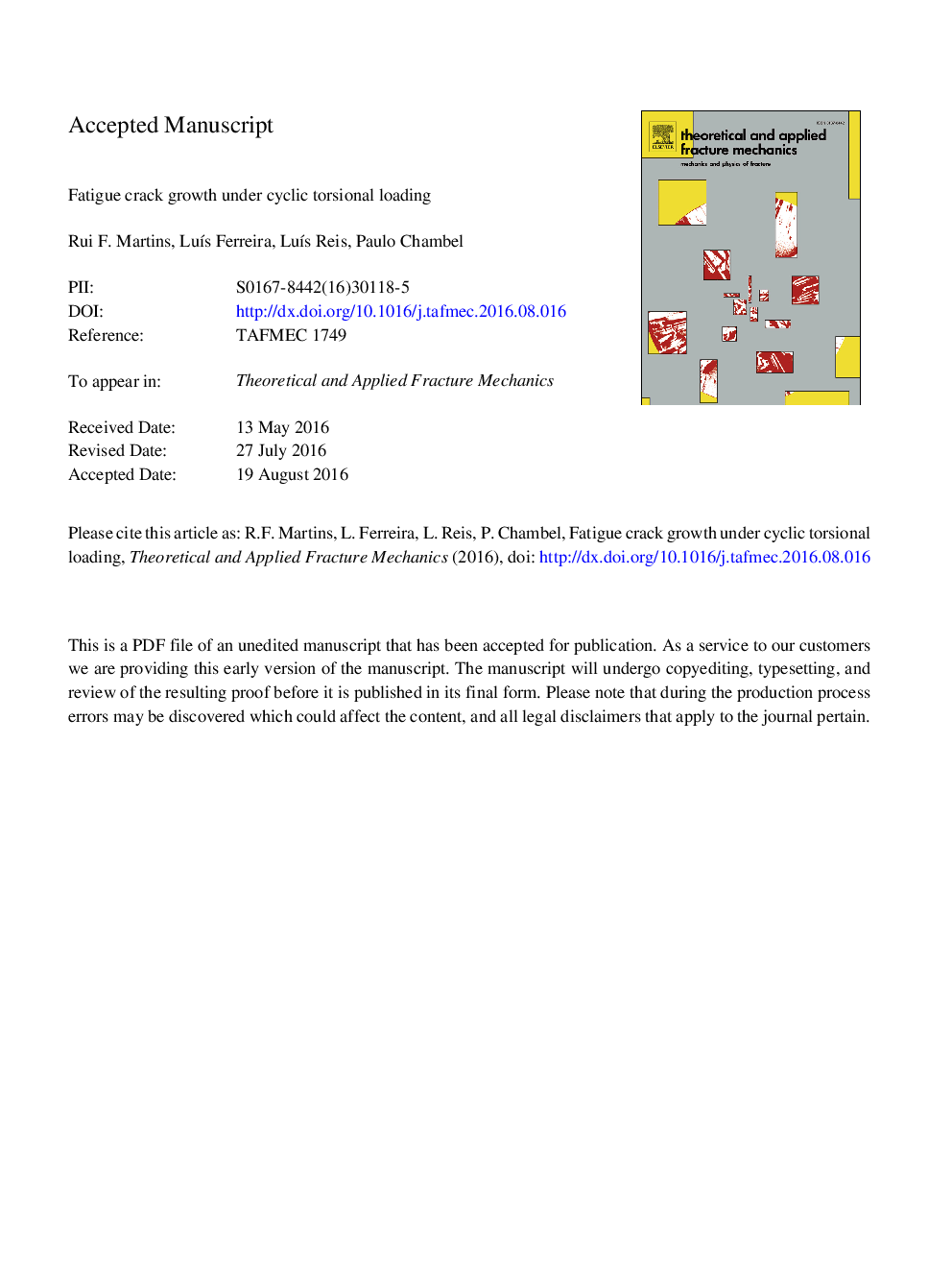| Article ID | Journal | Published Year | Pages | File Type |
|---|---|---|---|---|
| 5019818 | Theoretical and Applied Fracture Mechanics | 2016 | 21 Pages |
Abstract
In the research herein presented, mode III and mode I fatigue loading tests were carried out on standard compact tension (CT) specimens using a bi-axial servo-hydraulic Instron 8874 machine. Thin sheet CT specimens were made of two types of austenitic stainless steels, namely an AISI 316L stainless steel and a high-strength Cr-Mn stainless steel. Specimens were pre-cracked in mode I, at room temperature, and crack growth paths were experimentally determined. Fracture surfaces of rectangular sections were observed using optical devices and crack growth revealed to be higher at the external surfaces than at the mid plane of the specimens tested under mode III fatigue loading; in addition, smooth slant crack growth occurred, as well as crack branching. Fracture surfaces obtained under mode I loading revealed that crack grew flat, coplanar and normal to the tensile axis, as expected. Additionally, stress intensity factors present at tip of each branch crack loaded under mode III were calculated through finite element analyses (FEA). Hence, although an out-of-plane torsional loading was remotely applied, a mixture of modes was foreseen to be applied locally at crack tip during crack growth, namely mode I, mode III and mode II loading, in that order of relevance, and equivalent stress intensity factor values at the crack tip were calculated using Pook, Richard or Schöllmann et al. criterion.
Related Topics
Physical Sciences and Engineering
Engineering
Mechanical Engineering
Authors
Rui F. Martins, LuÃs Ferreira, LuÃs Reis, Paulo Chambel,
